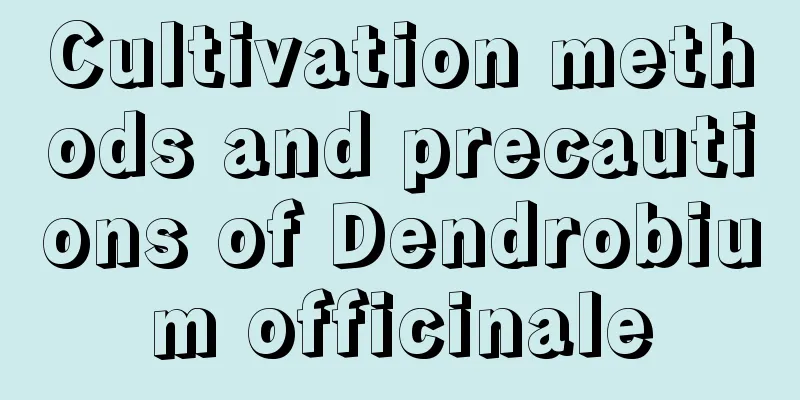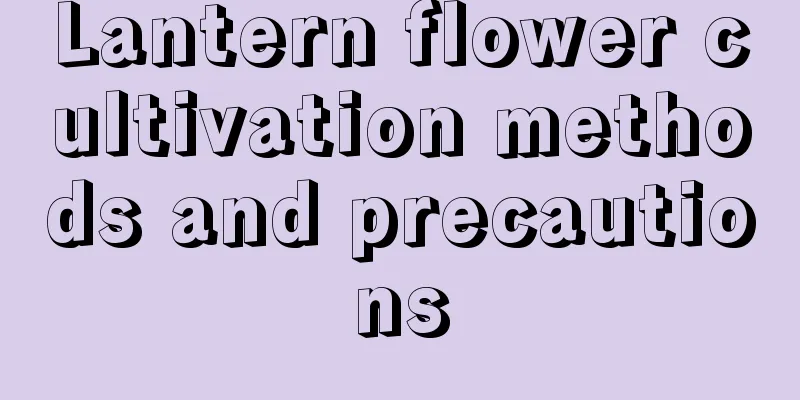Cultivation methods and precautions of Dendrobium officinale

1. Maintenance methods1. Temperature: Dendrobium sphenanthera is suitable for growing in warm places, specifically between 15 and 28 degrees. In a too hot environment, it will have an adverse effect on its growth. Therefore, it needs to be adjusted in summer. In addition, the temperature should not be too low in winter, so it is more appropriate to place potted plants indoors. 2. Light: Dendrobium sphenanthera prefers a semi-shady or semi-sunny environment. In other words, it should not be too dark, nor should it be exposed to direct sunlight. Therefore, it can be adjusted according to the season and the intensity of light. It can be exposed to mild light, but needs to be shielded from strong light. 3. Watering: Dendrobium sphenanthera likes moisture. Its distribution area is mainly where the annual rainfall is above one thousand millimeters. If you raise it yourself, you need to replenish water in time. In addition, the air humidity should be above 60 percent. Therefore, pay attention to humidification when it is dry. 4. Fertilization: Dendrobium plants have aerial roots, so it is best to use foliar fertilizer to supplement fertilizer. Generally speaking, it is used during the growth period, once a week to ten days. 2. Breeding techniques1. Reproduction: It can be propagated by cuttings. It can be done together with repotting. The materials chosen are mainly slender stems with many nodes. Then, it is time to choose a substrate with better air permeability. You can treat the wound with wood ash before inserting it. After insertion, place in a moist, cool place. Do not water for a week. 2. Pruning: For Dendrobium sinensis, its density should be kept at around 60%. Therefore, if the branches are dense, they need to be pruned in time. In addition, diseased and dry branches must be pruned off in time. 3. Problem diagnosis and treatment1. Disease: "Black spot" is more common, which will cause many black spots to appear on the leaves and can be treated with Bordeaux. Then there is "soot mold disease," which causes a layer of black substance to appear on the leaves. It can be treated by spraying carbendazim in time. 2. Pests: There are "non-shield scale insects" and "snails", etc. If the number is small, they can be captured manually. IV. Other issues1. Toxicity: Don’t worry, Dendrobium officinale is non-toxic. 2. Can it be grown at home? Dendrobium sphenanthera has high horticultural value and is suitable to be placed at home as a potted plant. |
<<: Cultivation methods and precautions of flower peony
>>: Cultivation methods and precautions of yellow bract arrowroot
Recommend
Cultivation method of double-petaled plum
1. Soil When planting double-petaled plum, loose,...
What tree has the strongest yang energy? What are the yang trees?
1. Rubber Tree When talking about trees with stro...
What are the flower types of peony?
Single petal peony The single-petal peony has mor...
As the weather turns cold, be careful when growing flowers indoors
Things to note when growing flowers indoors Don’t...
How to propagate Lycoris
Seed propagation of Lychnos Lycoris radiata can b...
Cultivation methods and precautions of Photinia fraseri
1. Soil The soil suitable for the plant to grow i...
Can lilac be propagated by cuttings?
There are many ways to propagate lilac. You can u...
When is the best time to transplant Podocarpus?
When transplanting Podocarpus, you need to dig a ...
Mugwort planting conditions are suitable for planting environment and region
Requirements for growing wormwood 1. Temperature ...
How to prune Sophora japonica
How to prune Sophora japonica There are generally...
Does Euphorbia pilosa prefer water or drought?
Does Euphorbia pilosa prefer humidity or drought?...
The efficacy and function of mulberry
Medicinal effects Mulberry trees have good medici...
How to sterilize black orchid
1. Root sterilization Before planting the newly b...
Are daffodils suitable for growing indoors?
Not suitable for indoor planting First Daffodils ...
How to keep red-eared sliders in winter?
The red-eared slider , also known as the Brazilia...









